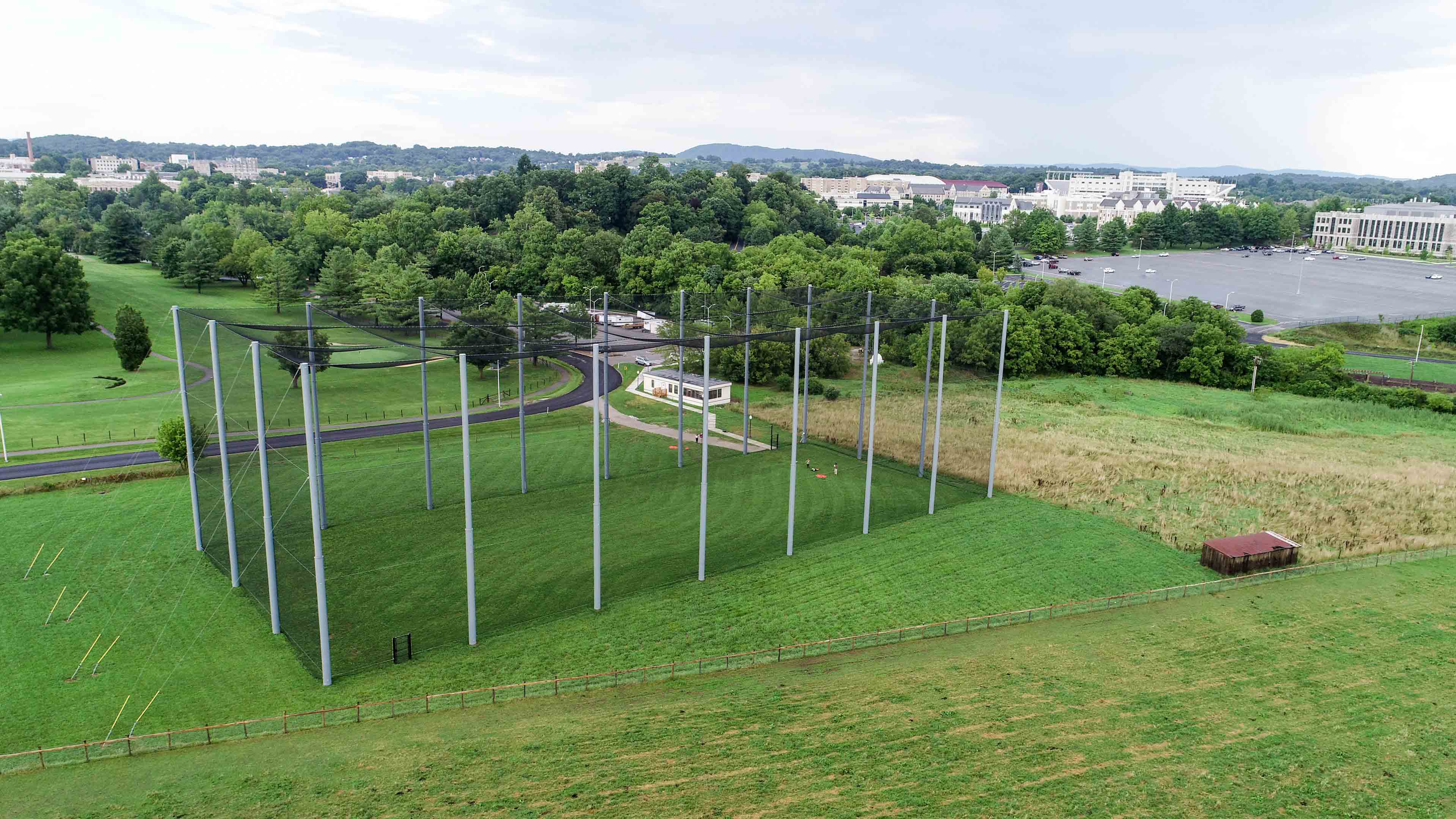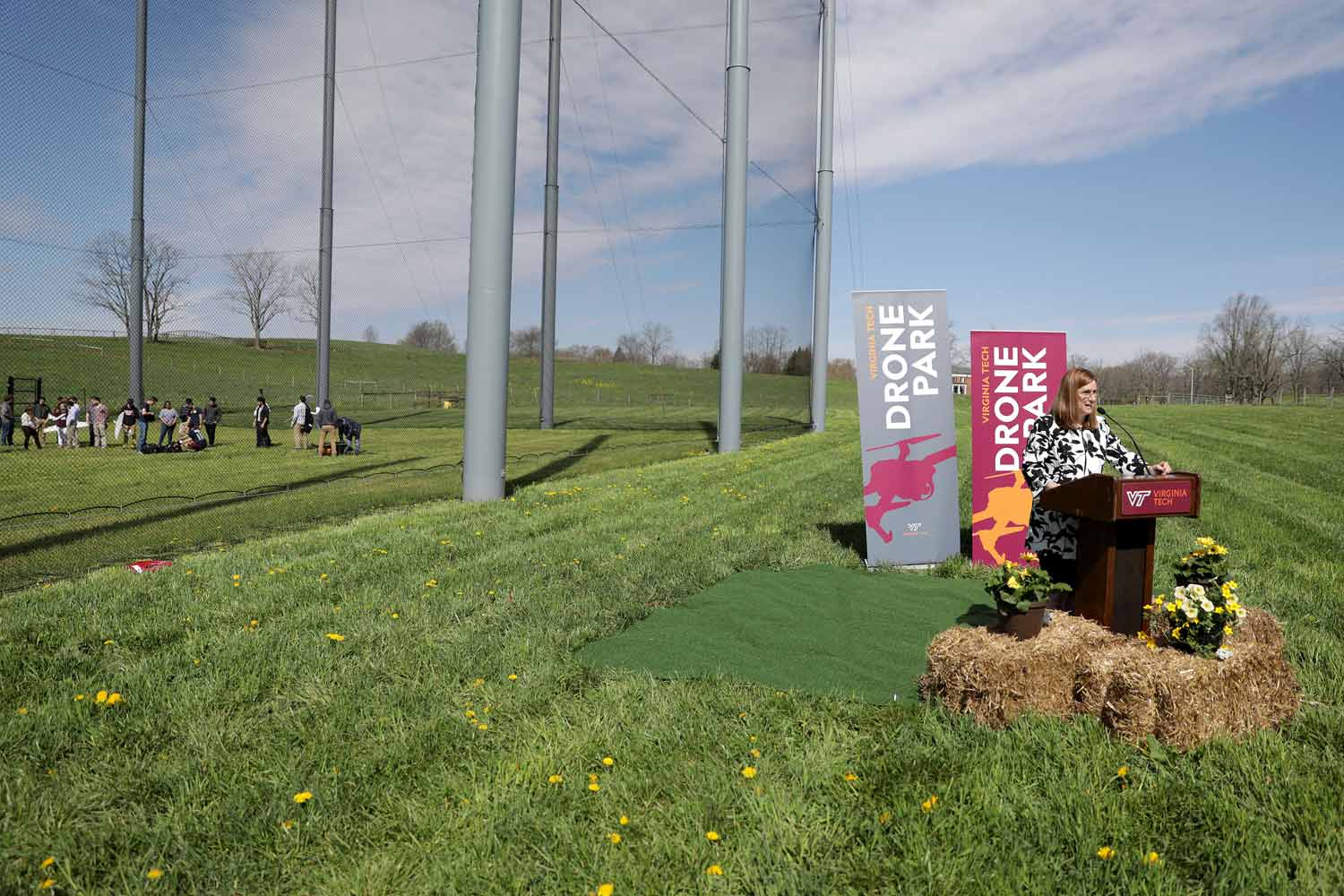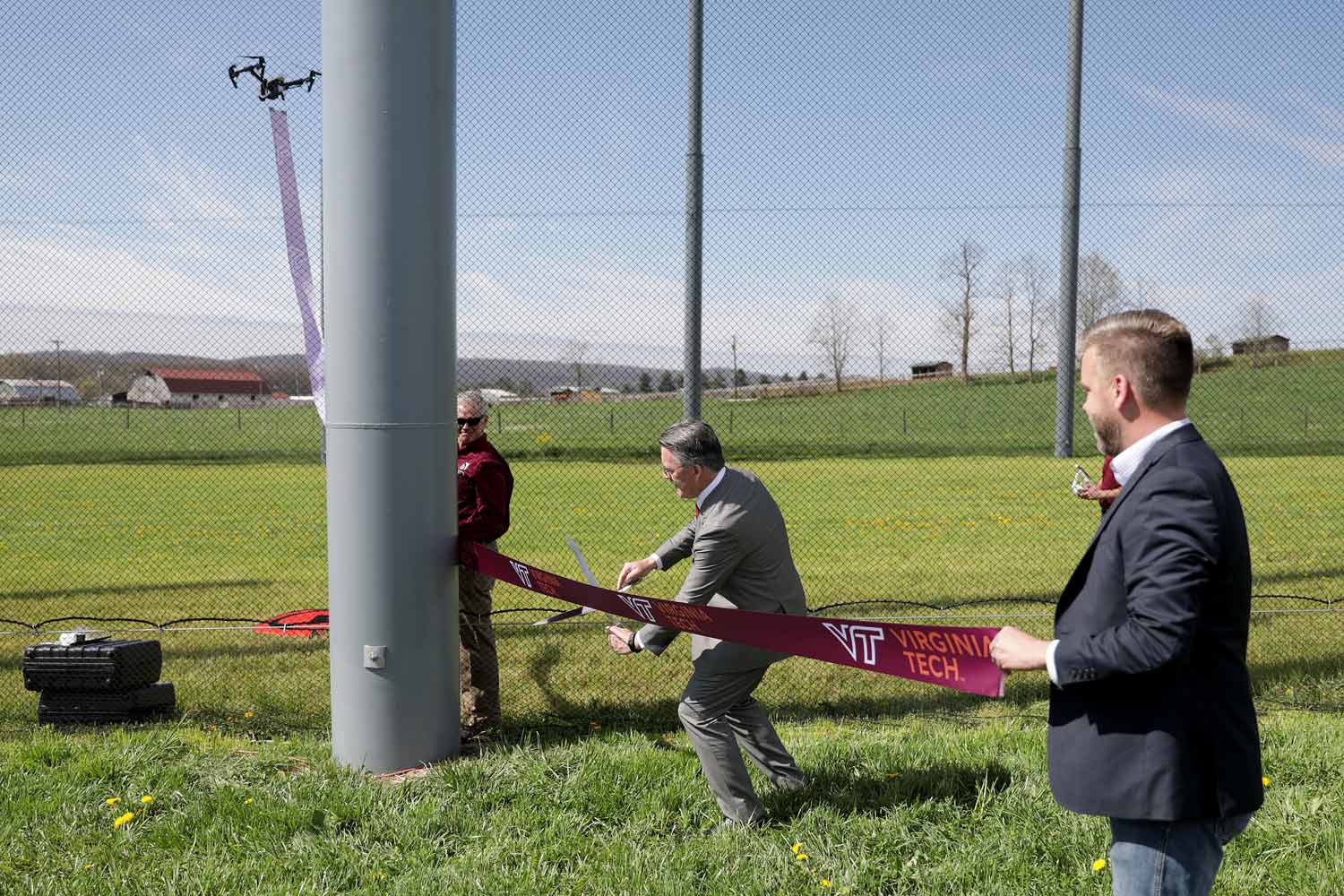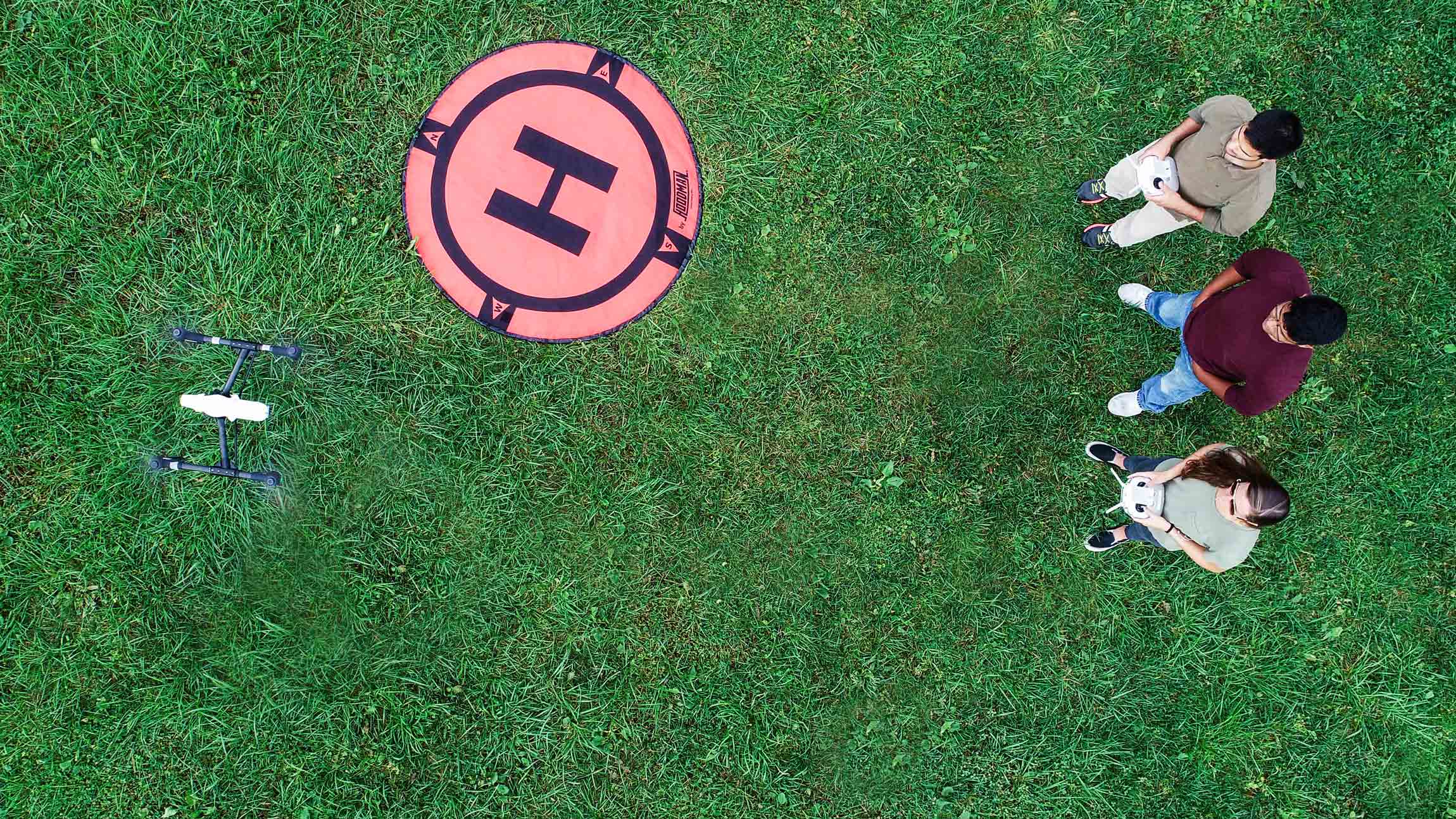The Virginia Tech Drone Park gives new pilots a place to learn — and experienced ones a place to innovate.
By late last fall, all 20 steel poles were anchored 17 feet underground by truckloads of concrete; golf netting was stretched between them; heavy-gauge guy wires pulled the panels taut.

But before Virginia Tech’s new drone park could open, there were final inspections to do.
And Kevin Yu was waiting.
“We kept asking, ‘Is it ready? Is it ready?’ One day the guy in charge sent us an email saying ‘It’s ready,’ and I was like, ‘Great, because I have something to do,’” Yu recalls. “We were in there the day after.”
Yu is a third-year doctoral student in electrical and computer engineering. With his advisor, assistant professor Pratap Tokekar, he has been working on a pair of autonomous vehicles: a drone and a ground vehicle. Fine-tuned navigation and communications systems guide the drone to land on its ground-based partner and recharge, breaking up a long surveillance or inspection task into smaller chunks that are manageable for the aircraft’s battery. Yu had been testing the system at Kentland Farm, some 10 miles away from campus; the drone park, tucked around the bend in Oak Lane where the golf course looks onto quiet pastures, would make his work much easier.
He wasn’t the only one keeping an eye on the park’s progress. Wm. Michael Butler, an associate professor of practice in the Department of Engineering Education, teaches one of the design courses required for first-year engineering students. A former aircraft configurator for Lockheed Martin and an avid amateur aviator, Butler challenges his students to build a drone that could be used to deliver medical supplies in remote areas.

The park’s first few weeks saw the earliest flights of those homemade foam-board aircraft, a few of which glided smoothly all the way down the park’s 300-foot span. The next semester, Butler scaled up the project for the larger spring class of 790 students. “It becomes a production,” he laughed.
Greg Calvert, who manages the park, has worked alongside Yu and Butler. Today, he’s the safety officer for the Virginia Tech Mid-Atlantic Aviation Partnership. But Calvert spent 27 years as a pilot in the U.S. Army, where he developed a knack for shepherding experts in other fields into the rigorous, heavily regulated, and occasionally byzantine universe of aviation. Now he uses those skills to help students, faculty, staff — and really anyone who walks in the park’s doors — become pilots.

The drone park is a made-to-order setting for that metamorphosis. Its net hems in any errant aircraft and exempts the park from strict Federal Aviation Administration regulations that govern flights in open airspace. Inside its boundaries, researchers can test prototype aircraft and run ambitious experiments that lie beyond the narrow, conservative scope of operations permitted in the open; novice pilots can practice their skills.
That Virginia Tech is now home to the country’s tallest drone park is just the latest superlative in a long tradition of autonomous systems research. The Virginia Tech Mid-Atlantic Aviation Partnership, which spearheaded the park’s construction and runs its operations, also leads two major federal programs that further drone integration, with a portfolio of high-profile partners like Wing, State Farm, and NASA. The drone park helps extend Virginia Tech’s national leadership in drone research, operations, and policy to an even broader group of students and faculty.



Yu’s team and a handful of Butler’s students had cameo performances at the park’s official opening ceremony this spring, where Virginia Tech President Tim Sands presided and a drone flew a victory lap around the park’s 85-foot-high ceiling, the ceremonial ribbon fluttering behind it. Activity hasn’t let up: Student and faculty researchers, the university’s top-ranked drone-racing team, local tech companies, and national organizations have all booked time on the park’s calendar. Outreach events have brought in a new school or summer camp almost every week.
“Seeing the incredibly intelligent, amazingly curious, energetic students gives me a new perspective,” said Calvert — who, in between flight training, fields calls from other universities asking for advice on launching similar programs.
One weekend, a couple of students walked up to the park’s adjacent lab and knocked on the door — they’d just bought a new drone, and had heard they could use the park. Absolutely, Calvert told them. “They spent three hours in there, learning how to fly,” he said.
“What’s the movie — if you build it, they will come? We built it, and they’re coming.”
If you want to have an impact on our students and faculty like those featured in this magazine, go here to support the College of Engineering. For more information, call (540) 231-3628.
-
Article Item
-
Article Item
-
Article Item



